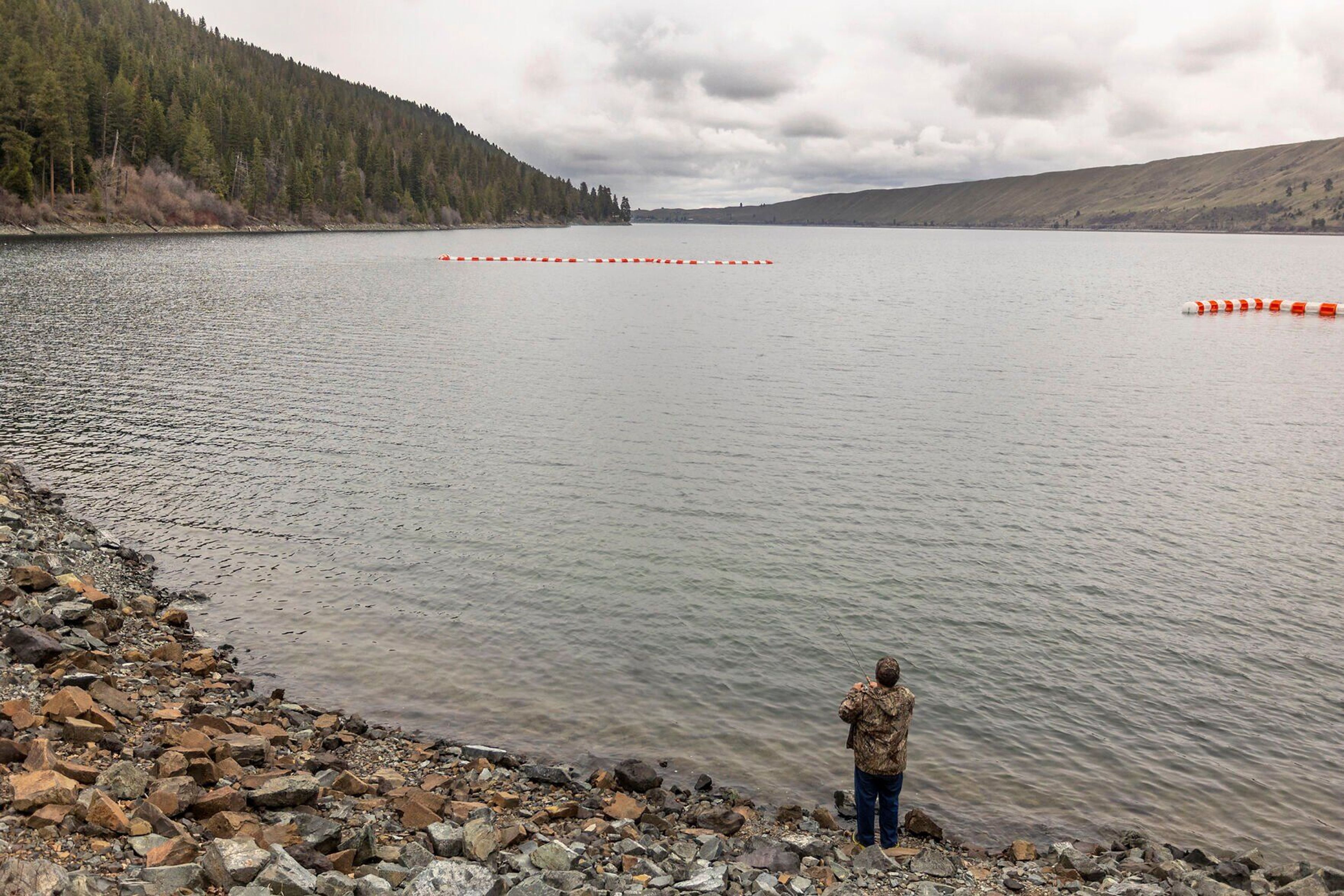Officials plan to close steelhead fishing
Responding to the worst steelhead run on record, fisheries managers in Washington said Friday they intend to close the Snake River to steelhead fishing from its mouth to the Idaho state line at Clarkston.
The Oregon Department of Fish and Wildlife expanded emergency fishing regulations Friday on middle Columbia River tributaries like the Dechutes, John Day and Umatilla rivers, to protect scarce wild and hatchery steelhead.
Fisheries managers in Idaho are working on steelhead recommendations that will be forwarded to the Idaho Fish and Game Commission for consideration Wednesday. Idaho Fish and Game officials have not indicated what measures are on the table, but said they would be designed to protect threatened wild fish and ensure hatcheries meet spawning goals. Fisheries managers in Washington and Oregon are working with Idaho managers to make sure fishing regulations are concurrent on stretches of the Snake River where the states share jurisdiction.
Together, the moves could be the first of several regulation changes taken in response to the dismal steelhead numbers. However, fisheries managers said they don’t have many remaining levers to pull.
From July 1 through Thursday, 29,524 steelhead were counted passing Bonneville Dam on the Columbia River. That is the smallest number for that time period ever recorded at the dam dating back to its completion in 1938 and just 24 percent of the 10-year average.
State, federal and tribal fisheries managers in the Columbia River Basin expected this year’s steelhead run to be poor. They forecasted a total return of 96,800 steelhead, including 89,200 A-run fish and 7,600 B-run fish. But the A-run fish, which return earlier, have dramatically underperformed against that forecast, so much so that the fisheries managers recently adjusted their forecast dramatically downward.
They are now expecting only 35,000 A-run steelhead to return at least as far as Bonneville Dam. The fisheries managers have not adjusted their forecast for the later-returning B-run steelhead. Those bigger fish are just starting to appear at Bonneville Dam.
Analysis conducted earlier this year by scientists at the Nez Perce Tribe’s Department of Fisheries Resources Management indicated 19 percent of the wild steelhead populations within the Snake River Basin have already hit the quasi-extinction threshold — an analytical tool used by the federal government to assess the risk of extinction. The threshold is triggered when 50 or fewer spawners return to their natal streams for four consecutive years. This year’s dismal run is likely to add on to that trend and could lead more of the populations to cross the threshold.
“It’s pretty bleak,” said David Johnson, director of the Nez Perce Tribe’s Department of Fisheries Resources Management. “We will be meeting with the states on how that is going to affect what happens up here relative to harvest on hatchery returns. For the wild fish, it is certainly a lot of trouble.”
Some groups are advocating for sweeping measures to protect the fish. The Conservation Angler, a fishing conservation group, asked the fish and wildlife commissions of Oregon and Washington to close all recreation steelhead fisheries.
“We think we need to do everything we can to help these fish and that includes reasonable restriction on fishing and, given the incredibly low run status this year, we think it’s reasonable and necessary to restrict recreational steelhead fishing on the mainstem Columbia and Snake rivers as well as the tributaries,” said Rob Kirschner, legal and policy director for the group based in Edmonds, Wash.
Commissioners from the two states met Friday to get updates on the run from fisheries managers and to discuss possible steps that can be taken to help protect wild steelhead. Both Washington and Oregon preemptively either closed steelhead fishing or moved to catch-and-release regulations on the Columbia River and many of the lower sections of its tributaries where steelhead bound for other rivers often seek temporary refuge. The mouths of those rivers are often cooler than the main Columbia River.
Larry Carpenter, vice chairman of the Washington Fish and Wildlife Commission, said anglers revere the fish and called steelhead an iconic species “that is almost a religious item for some people.”
“Please continue to look under every rock to see if there is anything else we can do to try to mitigate a situation I think is ... very dire,” he said to fisheries managers that participated in the meeting. “If there is anything we can do that provides the kind of benefit we would all like to see to these fish, I would encourage us to do that.”
The poor run comes at a time when many are pushing anew to remove the four Lower Snake River dams as the best way to recover imperiled salmon and steelhead runs in the basin.
In February, Rep. Mike Simpson of Idaho’s 2nd Congressional District unveiled a sweeping $33 billion concept that would breach the dams and make significant investments in affected industries and communities. The concept has enjoyed enthusiastic backing from Native American tribes and many fishing and conservation organizations throughout the Pacific Northwest. However, it has not gained support from key members of Congress in the region.
Barker may be contacted at ebarker@lmtribune.com or at (208) 848-2273. Follow him on Twitter @ezebarker.







